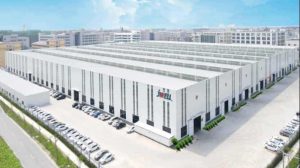Introduce
CPP (Cast Polypropylene) film is a popular plastic film used in a wide range of applications including food packaging, industrial packaging and labels. Producing a high-quality cpp cast film line requires a well-optimized production process that takes into account multiple factors, including raw materials, equipment calibration, process parameters, real-time monitoring, and quality control testing.
Optimization before production
- Raw material selection and testing
The first step in optimizing the production process of a CPP cast film production line is to select suitable raw materials and conduct quality tests. The quality of raw materials used in the production process directly affects the quality of the final product. Using premium raw materials ensures consistent product quality and reduces waste.
Plastic resin is the main raw material for producing CPP cast film. The quality of plastic resins varies from supplier to supplier, so choosing a reputable supplier with consistent resin quality is critical. Additionally, testing plastic resins prior to use helps identify any impurities or contaminants that may affect the quality of the final product.
- Equipment Calibration and Maintenance
Equipment used in the production process, including extruders and casting units, must be regularly calibrated and maintained to ensure optimum performance. Calibration and maintenance prevent equipment failure and keep equipment functioning properly, ensuring consistent product quality.
Calibration involves adjusting the equipment’s settings to ensure it produces the desired film thickness, width, and other characteristics. Maintenance involves cleaning and inspecting equipment to identify and resolve any potential issues before they lead to equipment failure or product quality issues.

- Process parameter optimization
The production process of cpp cast film line involves several key parameters including temperature, speed and tension. Optimizing these process parameters ensures that films are produced with desired properties, including thickness, clarity and strength.
Optimizing process parameters involves determining the optimum value for each parameter and adjusting them accordingly. For example, increasing the temperature of the extruder can increase the output of the film, but too high a temperature can cause the film to degrade or change color.
production optimization
- Real-time monitoring
Real-time monitoring and control of the production process is essential to ensure consistent product quality. Monitoring involves measuring key process parameters, including temperature, speed and tension, and comparing them to desired values. Control involves adjusting process parameters in real time to ensure that the films produced have the desired properties.
There are a variety of tools and technologies available for real-time monitoring, including sensors, cameras, and computer systems. These tools and techniques provide real-time feedback on the production process, allowing immediate adjustments to ensure consistent product quality.
- Process Adjustments and Corrective Actions
Despite careful optimization, problems can arise during production that negatively affect product quality. There must be procedures in place to quickly identify and correct these problems.
Common problems affecting product quality include equipment failures, process parameter deviations, and raw material quality issues. Identifying the root cause of these issues and taking corrective action quickly is critical to minimizing waste and ensuring consistent product quality.
- Quality control testing and analysis
Quality control testing and analysis are essential to ensure that the cast film produced meets the required specifications. Testing involves measuring the physical properties of the film, including thickness, clarity and strength, and comparing them to desired values. Analysis includes identifying any deviations from expected values and taking corrective actions to address them.
There are a variety of test methods and standards available for quality control testing, including ASTM International and ISO standards. Implementing a robust quality control program can help ensure consistent product quality and minimize waste.
post-production optimization
- Inspection and testing
Once CPP cast film is produced, the film must be inspected and tested to ensure it meets the required specifications. Post-production testing involves measuring the physical properties of the film, including thickness, clarity, and strength, and comparing them to desired values. Any deviation from desired values must be identified and addressed to ensure that the film meets the required quality standards.
- Feedback and continuous improvement
Feedback and continuous improvement are essential to optimize the production process of a cast film line for consistent product quality. Feedback can come from a variety of sources, including customer feedback, quality control testing, and real-time monitoring. Using this feedback to identify areas for improvement and implementing changes can help ensure that the production process continues to improve and produce high quality CPP cast film.
In conclusion
Optimizing the production process for a cpp cast film line requires careful attention to several factors, including raw material selection, equipment calibration, process parameters, real-time monitoring, and quality control testing. Implementing best practices in each area helps ensure that the cast film produced is of the highest quality, with consistent physical properties, thickness and clarity. By optimizing production processes, producers can reduce waste, increase efficiency, and ensure their customers receive high-quality products that meet their specifications.



